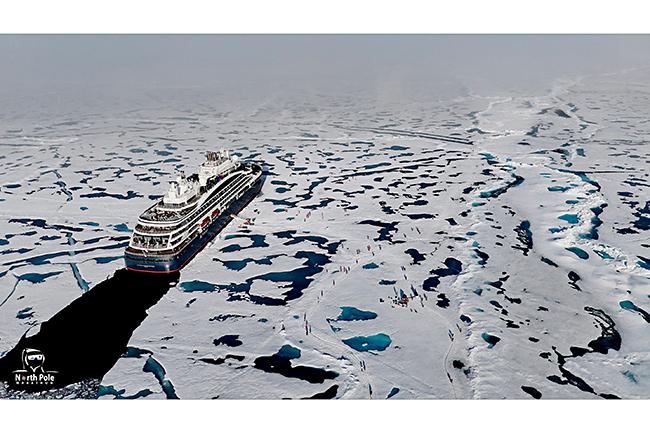Under warm summer conditions, t he sea ice stretching across much of the Arctic Ocean shriveled much more dramatically than it did during cooler summers of decades past, the National Snow and Ice Data Center has reported . "While it wasn’t a new record low, this year’s sea ice minimum is yet another example of a changed Arctic environment," said Walt Meier, an NSIDC senior research scientist. Every year, the Arctic's floating sea ice shrinks under summer warmth, typically reaching a minimum extent in September.
This year, the sea ice appears to have bottomed out on Sept. 11, continuing a long-term downward trend driven in large measure by human-caused warming. Along with the paltry amount of sea ice across the Arctic Ocean, other signs were a reminder (as if any was needed) that the Arctic has warmed nearly four times faster than the globe overall.
These signs included significant amounts of open water near the North Pole. And at the end of July, that helped a cruise ship carrying marathon runners to reach the pole, where they participated in a slushy race. Sea Ice Bottoms Out By Sept.
11, the sea ice had shriveled to 4.28 million square kilometers, or 1.65 million square miles, according to the NSIDC.
That's the seventh lowest minimum extent in the nearly 46-year satellite record. The ice coverage was about 749,000 square miles less than the 1981 to 2010 average minimum extent — an area of 'missing' ice slightly larger than Alaska, by far the biggest U.S.
state. This m.


















